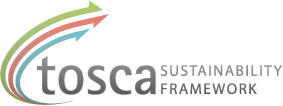Human development
How is human well-being measured? UNDP uses the human development index (HDI) which takes into account three basic aspects of human development: health, knowledge, and a decent standard of living. Health is measured by life expectancy at birth; knowledge is measured by a combination of the adult literacy rate and the combined primary, secondary, and tertiary gross enrolment ratio; and standard of living by GDP per capita.
The last 40 years have been a period of progress in human development as measured by HDI. The world average HDI increased by 29 % over this period. The increase came primarily from improvements in education and health. In 1970, 60 percent of adults in the world knew how to read and write and 48 percent of school-age children were enrolled in school. By 2007, those figures had respectively risen to 84 and 71 percent (Trends in Human Development – UNDP).
Mortality in children under the age of five was 7,7 million in 2009. This may sound like a high number, but is actually a nearly 30 % decrease since 1990.
Less good news from the UN the last year is however an increase in costs for UN peacekeeping operations and the fact that environmental and resource pressures is a growing driver in displacement of people.

